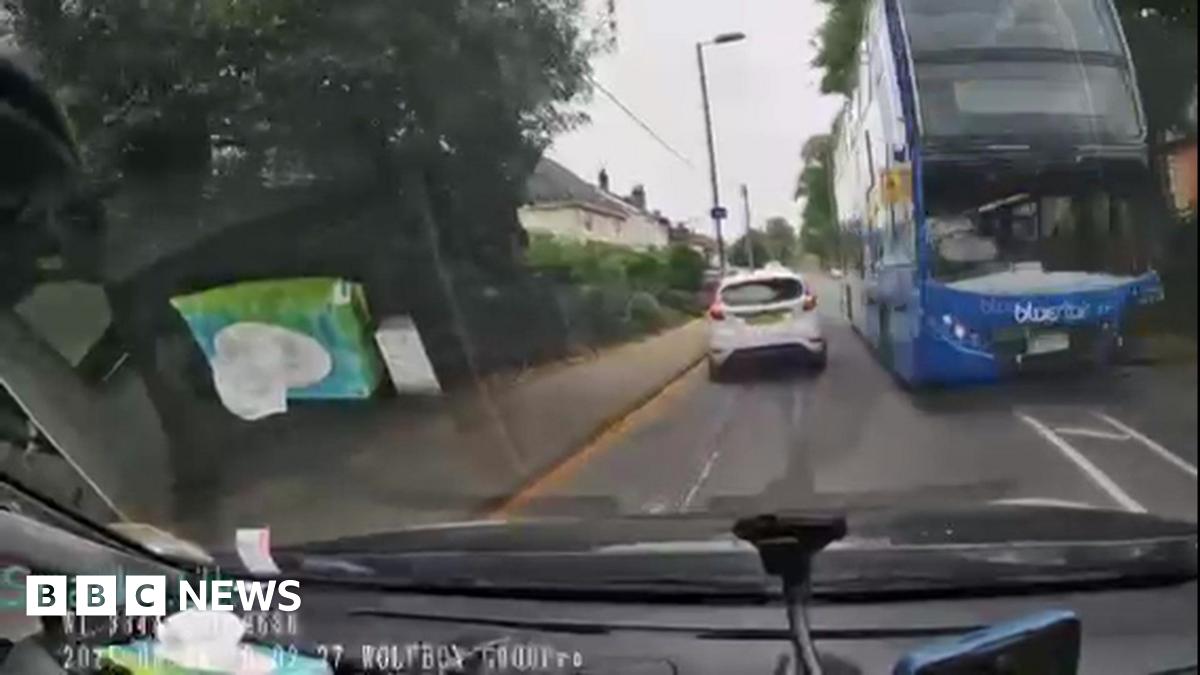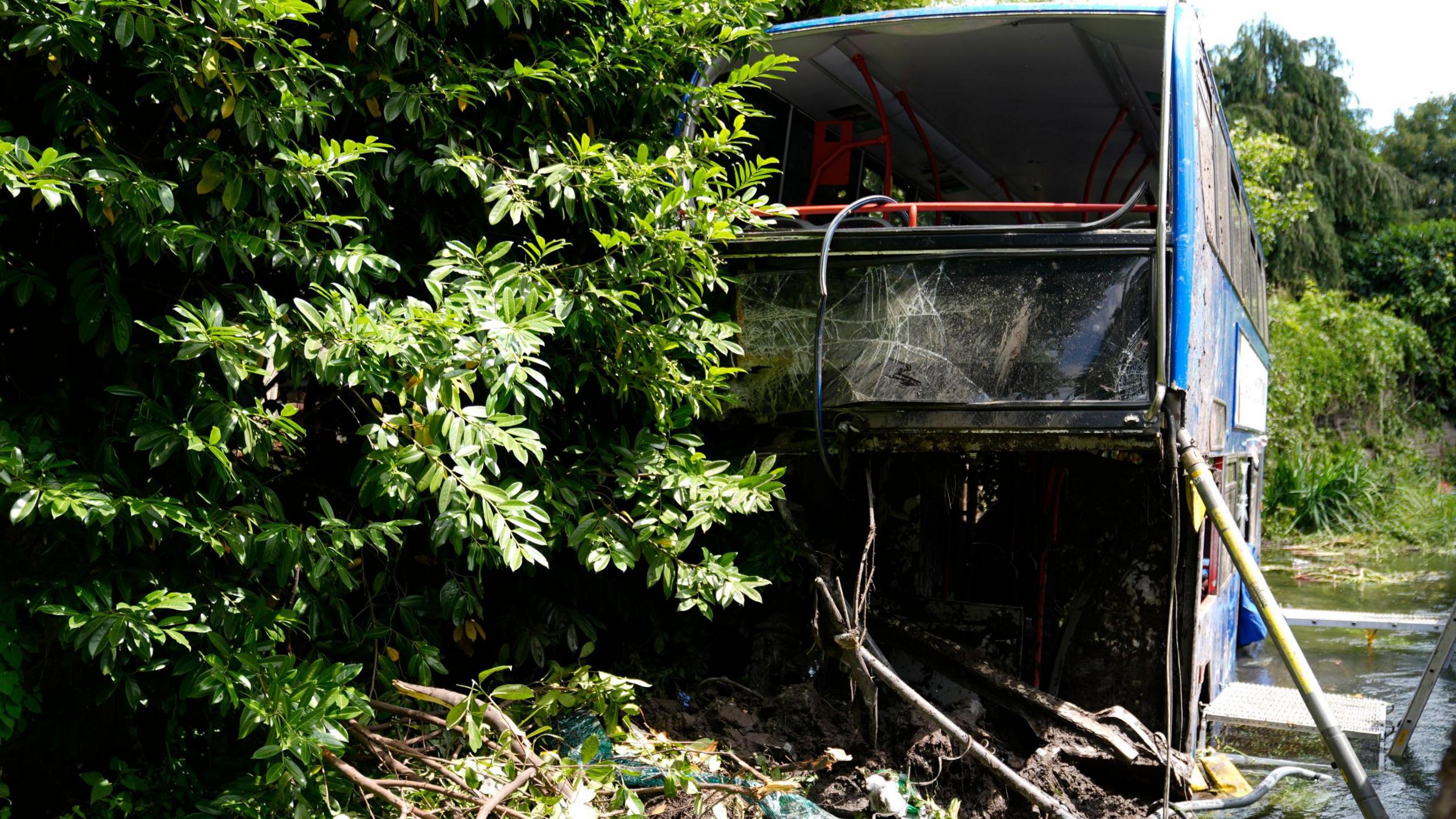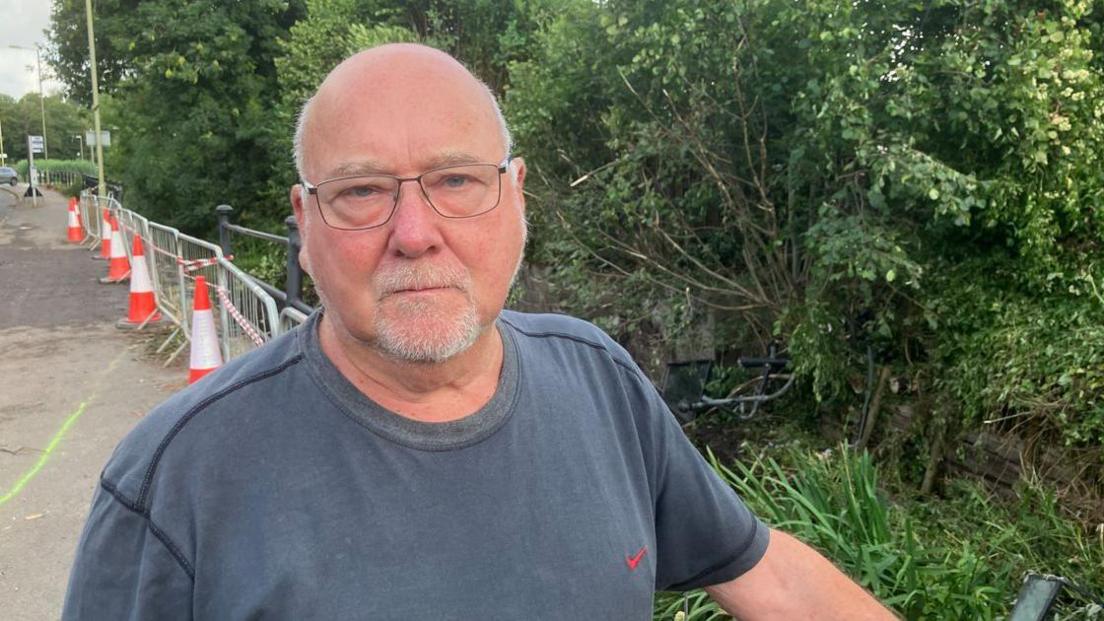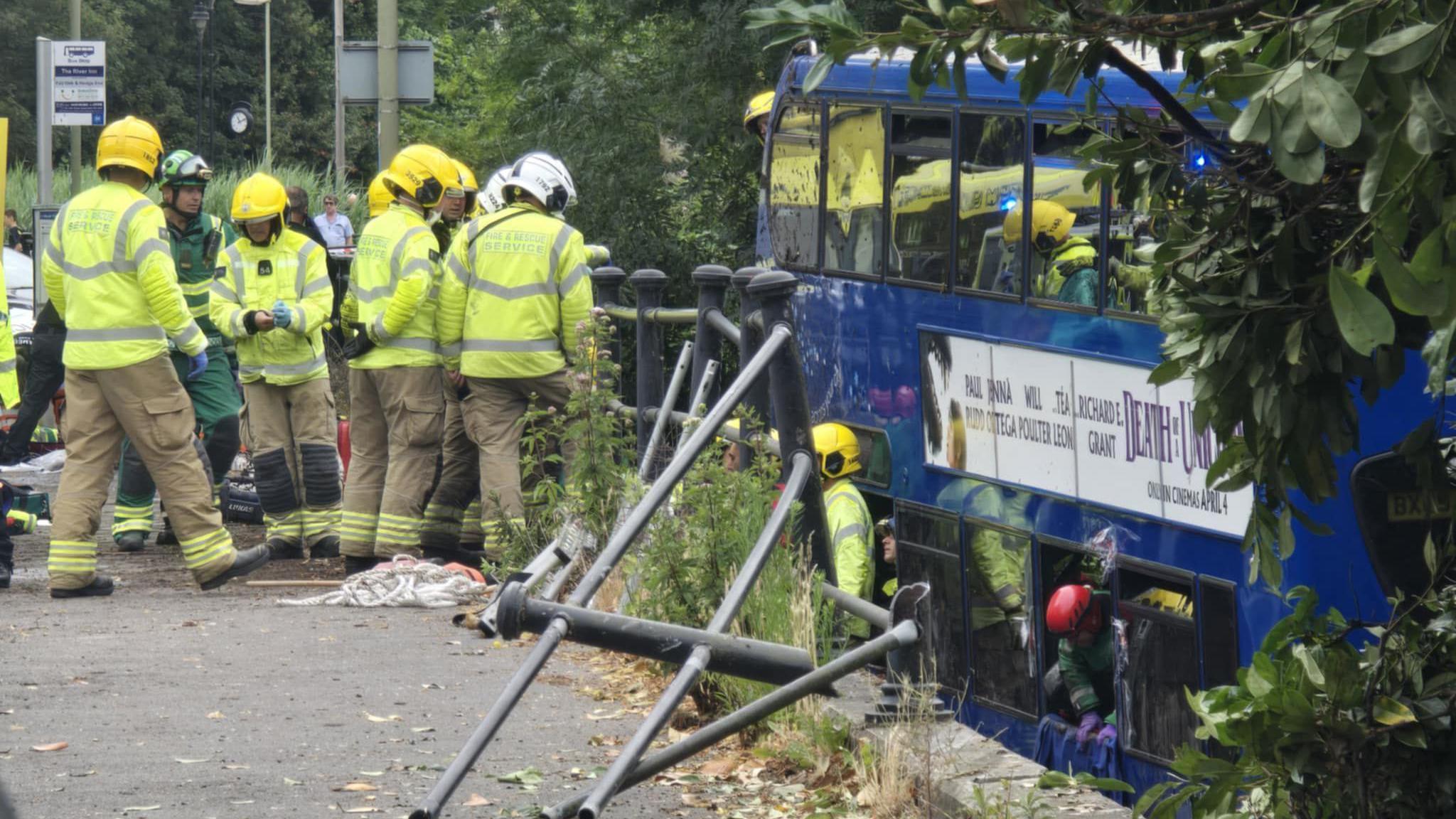The driver of a double-decker college bus which crashed off a road into a river has been described as a "hero" by one of the first people to reach the scene.
The bus was seen swerving through oncoming traffic and ploughed through railings on the wrong side of Bishopstoke Road in Eastleigh, Hampshire, at about 10:00 BST on Thursday.
Dr John Fisher, who helped rescue students, told the BBC: "It feels that he tried to ditch it to avoid a head-on crash... it's a bit of a miracle."
Police said the driver, a 69-year-old man and a student, a 16-year-old girl who suffered serious injuries remain in hospital. Three other students suffered serious injuries and a further 15 had minor injuries.
Image source, Andrew Matthews/PA Media
Image caption,
The bus carrying pupils from Barton Peveril Sixth Form College came off the road on Thursday morning
Police said the three students with serious injuries - two girls and one boy, all aged 17 - have since been discharged from hospital.
Of the 15 other passengers, aged between 16 and 18, who suffered minor injuries, three received hospital treatment.
Det Sgt Gary Doughty of Hampshire Constabulary said: "This must have been a terrifying ordeal for everyone on the bus and for the families of the young passengers.
"We have worked closely with staff from the college to contact the families of all those involved and I want to thank the college for their assistance with this, as well as our ambulance and fire service colleagues for their help with the injured parties and recovery of the bus.
Witnesses to the crash have already provided "key information" to help investigators establish what happened, he added.
"While we understand it will be tempting for people and the media to speculate on the potential causes of the collision, we just want to stress that officers are in the early stages of their investigation and are keeping an open mind."
He urged any witnesses and anyone with relevant dash cam footage to come forward.
Police have also praised the bravery of members of the public and emergency services who helped rescue some of the students and the driver who were trapped.
Image caption,
A window from the bus and debris remained in the river on Friday morning
The B3037 Bishopstoke Road was closed in both directions while police gathered evidence.
Work to remove the double-decker was carried out overnight with it lifted on to the road in the early hours. It was later towed away and the road reopened.
Dr Fisher, a retired university teacher, whose garden backs on to the river said he was marking exams when he heard an "enormous crash... we came out and there was a double-decker bus at the end of the garden".
He said using steps that go down into the water, along with his wife, a retired nurse, and neighbours, they "found the children around the bus and went and helped them".
He believed the driver tried to avoid hitting vehicles and pedestrians before landing in the river.
"We think the driver is a bit of a hero," Dr Fisher said.
Image caption,
Dr John Fisher, along with his wife and neighbours, helped the students as they emerged from the bus
Another witness previously told the BBC the driver reported that his brakes and accelerator failed at the same time.
Kelly West, who was one of the first on the scene, said: "It does appear that what he was saying was that the brakes didn't work and the accelerator was jammed because it was horrifically fast, it was speeding massively."
The Bluestar bus, carrying Barton Peveril Sixth Form College students, hit a lamp-post, shattering a windscreen, before leaving the road, according to student Freddie Sampson, who was on the top deck.
The 18-year-old said: "It was like we couldn't stop and had to weave through traffic trying not to hit any cars and then the bus driver lost control - we went flying into the river."
Image caption,
Student Freddie Sampson said the bus was "weaving through traffic"
Bruno Aguiar, who
captured the moments before the crash on his dashcams, was among the first on the scene after seeing the bus swerve past him as he drove in the opposite direction in his van.
The electrician used his ladder to get several of the students off the bus.
He said: "I was heading to work, I saw a bus coming towards my direction, I don't know how but I had the reflexes to pull over.
"Then when I looked in my mirror I stopped seeing the bus and thought... where's the bus? Then it clicked... they went into the river."
He said he ran to the river and saw that the top deck of the bus "was full of children... so I ran back to the van to get my ladder and started telling children to come out of the bus".
"I was in shock with everything but my main goal was to help the children get out," he added.
Image caption,
Bruno Aguiar said his "main goal" was to get the children out the bus







